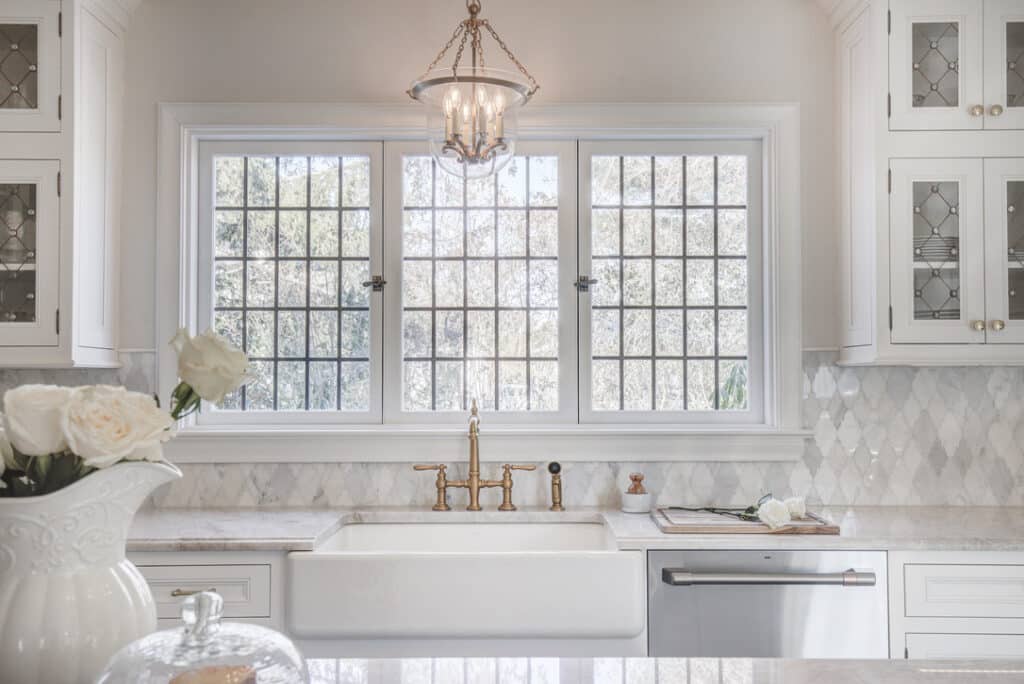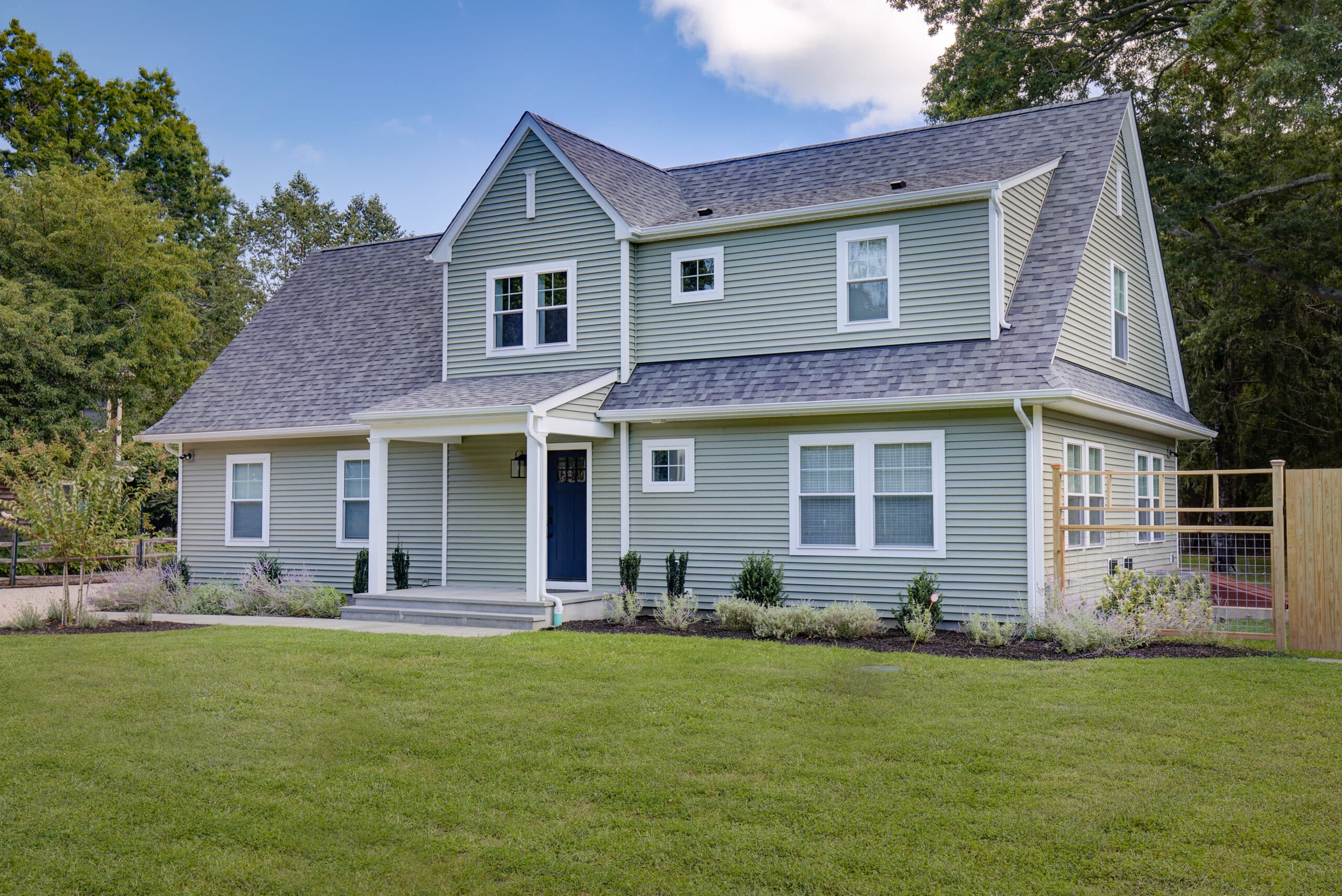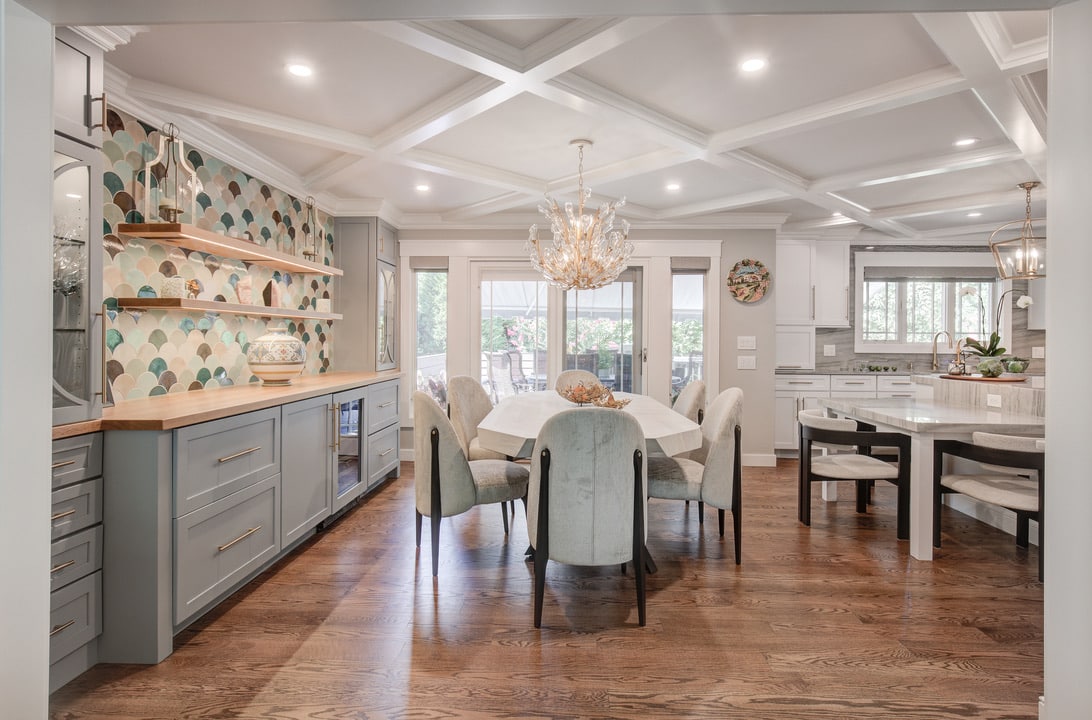Deciding whether to move or remodel my house can be tough. You might want more space, a better layout, or just a change, but it’s not always clear which choice is right for you. The right answer depends on your needs, budget, and how attached you are to your current home.

You may want to stay if you like your neighborhood or if it’s cheaper to remodel than to buy a new place. Moving might make sense if your home can’t be changed in the ways you want, or if a new location would better suit your life.
This article will help you look at the main things to think about before making your choice. You’ll get clear points for both sides, so you can make a practical decision.
Assessing Your Needs and Goals

When deciding between moving and remodeling, you need to look carefully at your situation. Think about how you use your home, your future plans, and what living in your current space means to you.
Understanding Your Lifestyle and Space Requirements
Start by listing what you like and don’t like about your home. Pay close attention to how each room is used and if there are areas that always feel crowded or unused.
Ask yourself questions such as:
- Do you need more bedrooms or bathrooms?
- Is your kitchen too small or outdated?
- Are you finding it hard to work from home due to space issues?
- Does anyone in your house need special access or safety features?
Write down specific features you need, like extra storage, a bigger backyard, or a dedicated office. Make a chart to help sort your “must-haves” and “nice-to-haves”:
| Must-Haves | Nice-to-Haves |
|---|---|
| 3rd bedroom | Walk-in closet |
| Home office space | Updated flooring |
| Two bathrooms | Mudroom |
Knowing the difference will help you see if remodeling can solve your problems or if moving is the better option.
Identifying Long-Term Plans
Think about how long you plan to stay in your current area. If your job is stable and you want to remain in the same school district, remodeling might make sense.
If you expect big changes—like new family members or a move for work—you may want to keep your options open. Ask yourself these questions:
- Will you want to live here in five or ten years?
- Are you planning to retire soon or downsize?
- Do you expect your needs to change, such as an aging parent moving in?
Consider the impact on your finances. Remodeling can add value, but moving might put you closer to good schools, your job, or amenities. Weigh the short-term inconvenience of a remodel against the long-term benefits of staying or moving.
Evaluating Emotional Attachment
Emotional attachment to your home can influence your decision. Many homeowners feel a strong connection because of memories or time spent improving the house.
Think about what your home means to you. Is it a place where your children grew up? Do you have friendly neighbors or a sense of community you value?
List the reasons you care about your current home:
- Family traditions and memories
- Relationships with neighbors
- Comfort with the neighborhood
If leaving would be difficult for you or your family, this should be part of your decision. On the other hand, if your home is causing stress or no longer fits your lifestyle, moving may be a positive change.
Financial Considerations and Cost Comparison
When deciding whether to move or remodel your house, you need to look closely at your budget, financing options, and how much value your choice adds to your home. Carefully comparing costs and possible return on investment can help you make a clear decision.
Analyzing Cost of Moving Versus Remodeling
Moving costs can add up quickly. You may pay for realtor fees, closing costs, moving services, a down payment, and sometimes higher property taxes. On average, moving can cost 5% to 10% of your current home’s price before you even move in.
Remodeling also adds up, but you can control expenses by choosing which projects to tackle. Basic home improvements like painting, new floors, or small upgrades may cost a few thousand dollars. Major renovations like kitchen or bathroom remodels can range from $20,000 to $80,000 or more, depending on the size and materials.
Below is a basic comparison:
| Expense Category | Moving | Remodeling |
|---|---|---|
| Realtor Fees | 5%-6% of home sale price | N/A |
| Moving Company | $2,000–$5,000 | N/A |
| Closing Costs & Taxes | 2%-5% of purchase price | N/A |
| Remodeling Costs | N/A | $10,000–$100,000 (project-based) |
Exploring Home Equity and Financing Options
You might use your home equity as a funding source for remodeling. A home equity loan or a home equity line of credit (HELOC) lets you borrow against the value you’ve built in your home. These usually have lower interest rates than personal loans.
If you move, you may need a larger down payment, especially if home prices have increased. If you choose to remodel, consider your current mortgage terms. Taking out a new loan or refinancing can change your monthly payments.
Financing options include:
- Home equity loan or HELOC
- Personal loan
- Cash-out refinance
Understand the total loan cost and terms before making a decision.
Understanding Return on Investment
Most home remodeling projects do not give back every dollar spent, but some can add more value than others. Kitchens and bathrooms often have a higher return on investment (ROI) than bedrooms or basements.
For example:
- Kitchen remodel: 60%-80% ROI
- Bathroom remodel: 60%-70% ROI
- Roof replacement: About 60% ROI
If you move, your ROI depends on the housing market and how much your current home has gained in value. If you built up a lot of equity, selling might make sense if home prices are up. If not, you may not get as much back from a sale as you expect.
Remodeling: Pros, Cons, and Considerations
Deciding to remodel your home means looking at the benefits, the possible downsides, and how your changes compare to your neighborhood. This helps you make smart choices about where to spend your money and time.
Benefits of Remodeling Your Current Home
Home renovation can help you stay in a place you like while updating it for your lifestyle. You can add bedrooms, upgrade the kitchen, or make your bathroom more modern. These home improvements let you keep the memories and avoid the hassle of moving.
Remodeling also gives you more control over the style and quality of the work. You get to pick the materials, colors, and layout that fit your needs. Sometimes, making changes can increase the value of your home if you plan carefully.
Other benefits include:
- Avoiding moving costs (such as packing, hiring movers, and real estate commissions)
- Customizing your space to better fit your daily life
- Improving energy efficiency with new windows or insulation
If you like your location and neighbors, home remodel projects let you improve your living space without starting over somewhere new.
Potential Downsides of Renovation
Remodeling your current home can be expensive and stressful. Costs often go higher than you expect, especially if workers find problems like old wiring or plumbing. Sometimes, you may have to live in a construction zone for weeks or even months.
Renovation projects can bring dust, noise, and disruption. Delays happen if materials do not arrive on time or if you need extra permits. You need to plan for where you will stay if parts of your home are not usable.
There is a chance your home improvements will not add as much value as you hope. Not all renovations give a good return on investment in every area. It is important to set a clear budget and expect that the process may be more involved than you think.
Avoiding Over-Improving for the Neighborhood
When you remodel, you should think about the value of other homes nearby. Over-improving means spending a lot on upgrades that make your home cost much more than others on your street. This can make it harder to get your money back if you ever sell.
Ways to avoid over-improving:
- Research recent local home sales: Check prices for similar remodeled homes in your neighborhood.
- Keep projects in line with neighborhood standards: For example, putting in a luxury kitchen might not pay off if most nearby homes are modest.
- Talk to a real estate agent before you renovate: They can tell you what features buyers value in your area.
Use your budget wisely and think about whether your remodeling plan matches the area where you live. This helps protect your investment and makes your home easier to sell if you move later.
Moving: Pros, Cons, and Considerations
Relocating gives you the chance to find a new neighborhood, a different layout, or even a bigger home. But moving involves extra costs, stress, and time, especially when selling your current house.
Advantages of Relocating to a New Home
Moving lets you pick a home that better fits your needs. You can choose a location closer to work, better schools, or a safer community. It’s also a way to get modern features, more space, or a yard if your current house cannot be easily changed.
A new home means you start fresh, without the dust and noise of remodeling. There is no need to live in a construction zone. You may also find better energy efficiency and lower utility bills in a newer house or upgraded property.
Relocating can reduce travel time to work or family. It may even bring you closer to local parks, services, or public transportation. For families, a move could mean a better environment for kids and more social options.
Challenges and Stress Associated with Moving
Moving is a complex process that can be mentally and physically draining. Packing, organizing, and hiring movers takes a lot of effort. Scheduling the move, finding a new place, and adjusting to a new community is stressful for most people.
You will also need to leave behind neighbors, routines, and familiar places. Children and pets may have a harder time adjusting. The uncertainty of selling your home and finding a new one at the right price adds more pressure.
Sometimes, unexpected problems pop up. Your sale could fall through, or closing dates might not line up. Delays can force you to find temporary housing, store belongings, or move twice.
Costs Involved in Selling and Buying
There are several costs to know before moving. Real estate agent commissions, usually 5-6% of your home’s sale price, are one of the biggest expenses. You also pay closing costs, which cover fees for paperwork, inspections, and loan services.
Other moving costs include hiring professional movers, renting a truck, or buying packing supplies. You might need to pay for repairs to your old home to make it sellable. If you buy before you sell, you may cover two mortgages at once.
Here is a basic breakdown:
| Expense | Estimated Cost |
|---|---|
| Realtor commissions | 5-6% of sale price |
| Closing costs | 2-5% of sale/purchase |
| Moving company or truck rental | $1,000–$5,000+ |
| Repairs and prep | $500–$5,000+ |
| Temporary housing/storage | Varies |
Evaluating Market Conditions and Timing

Market conditions, home prices, and mortgage rates affect whether moving or remodeling is the smarter choice. The best time to act depends on both national and neighborhood trends.
Analyzing Local Real Estate Market
Your local real estate market changes often. Prices in your area may be rising, falling, or staying steady. If there are many homes for sale, it can be easier to find a new place to live, and you may get a better price if you sell.
If there are very few homes for sale, you might make more money if you sell your house now. However, it may be hard to buy a new one without paying more. Check recent sales in your neighborhood for a realistic view.
Work with a real estate agent to get detailed information. Agents can show you data like how long homes sit on the market and how prices compare month to month. Websites like Zillow and Redfin also offer local market trends.
Impact of Mortgage Rates and Home Prices
Mortgage rates have a big effect on what you can afford. Even a 1% change in rates can add up to hundreds of dollars more or less per month on your payment. If rates are low, it might make sense to buy. If rates are high, remodeling may be more cost-effective.
Home prices also play a key role. If prices are rising quickly, buying another house could be more expensive than improving your current home. If home values are dropping, selling may not get you the money you expect.
Tip:
| Factor | Influence on Decision |
|---|---|
| High Rates | Favors remodeling |
| Low Rates | Favors moving |
| Rising Prices | Buying gets more expensive |
| Falling Prices | Selling brings less profit |
Timing Your Decision for Maximum Benefit
When you make your decision can strongly affect your outcome. Spring and summer often see more buyers and higher home prices. Winter and late fall tend to have fewer buyers but can offer less competition and lower prices.
Pay attention to trends in your city and surrounding areas. If experts expect rates or prices to change soon, waiting or acting quickly could save you money. For remodels, plan for contractor schedules and possible supply delays.
Check if your community is seeing new jobs, school changes, or new developments. These things can shift demand for homes and affect the timing of your move or remodel decision.
Making the Final Decision

You need to look closely at your own needs, budget, and the current real estate market. Getting input from experts can help you avoid common mistakes and plan your next steps.
Weighing Pros and Cons Based on Your Situation
Start by listing what you gain and lose with each option. If you remodel, you get to stay in your neighborhood and avoid paying real estate agent commissions or moving fees. However, construction noise, mess, and unexpected costs can be hard to deal with.
If you move, you may be able to get a bigger or more updated home. You might have more choices in different neighborhoods or school districts. But buying and selling a home comes with closing costs and may mean you need to pay agents up to 5-6% of the sale price.
Ask yourself questions such as:
- Do I love my location?
- Is the real estate market in my area strong for sellers?
- Can my current home be updated to fit my needs?
- Do I have the budget for either choice?
You should also think about timing. Selling may take time, while remodeling could drag on longer than planned.
Consulting Professionals for Guidance
Talking to real estate agents can give you useful facts about how much your home could sell for right now. Agents also help with understanding how much you might pay in commissions and other fees during the sale process.
If you consider remodeling, meeting with an experienced contractor will help you set a realistic budget. Contractors can tell you what changes are possible and what could cost more than you expect.
You could also ask a financial advisor how each decision would affect your long-term finances. Some homeowners also find it helpful to talk with local building inspectors or appraisers to learn about property values and any local laws that could affect their plans.
Planning Next Steps
Once you know the pros and cons and get expert input, make a clear list of tasks. If you choose to remodel, start by getting bids from contractors and checking their references. Create a detailed budget for all costs, including permits and any time you may need to live elsewhere.
If you plan to move, meet with a real estate agent to start the selling process. Find out what repairs or updates are needed to sell your home for a higher price. Look at listings in your target neighborhoods and figure out your budget after agent commissions and moving costs.
Keep your timeline in mind. Write down what needs to happen each week so you can track your progress and avoid surprises. A step-by-step approach helps homeowners stay calm and stay within their budget.
Frequently Asked Questions

Choosing whether to move or remodel depends on your budget, home structure, real estate trends, and future plans. You’ll need to compare costs, benefits, and the long-term value of each option.
What are the financial considerations when deciding whether to move or remodel?
You should look at your total budget, including savings, loan options, and future earning potential. Factor in renovation costs, moving expenses, realtor fees, and potential changes in mortgage payments. Also, remember to include property taxes and utility costs, which may change if you move.
How can I determine if my current home can meet my needs with renovations?
Check the space, structure, and local building codes. List your needs and see if a renovation would solve them. An architect or contractor can tell you if your home’s layout and foundation will support your plans.
What are the common signs that it’s better to move rather than remodel a home?
If your home’s structure is old, has severe issues, or cannot be updated to what you want, moving may be smarter. Outgrowing the area, such as needing better schools or shorter commutes, is another sign. Too many needed repairs at high cost can also make moving a better choice.
How does the local real estate market influence the decision to move or remodel?
If home prices in your area are rising quickly, selling may help you get more money. In slow markets, remodeling may add more value than moving. High demand may make it hard to find a new home that suits your needs.
What should I include in a cost vs. benefit analysis when comparing moving to remodeling?
List all costs for both options, including renovation quotes, realtor commissions, moving fees, and any new furniture you would need. Compare these to the expected increase in your home’s value after remodeling, or the costs and benefits of a new home.
What long-term factors should be considered when deciding to renovate an existing home or purchase a new one?
Think about the size of your family, your job stability, and the school district. Plan for changes like aging or health needs. Also, consider how long you want to live in the area and if the neighborhood fits your future plans.





